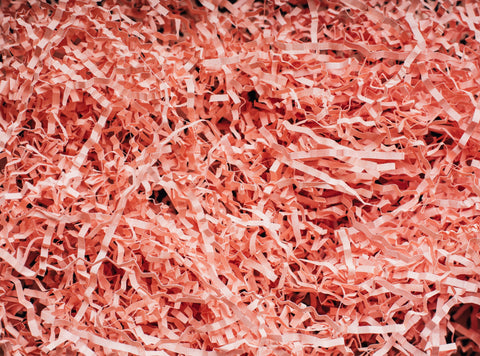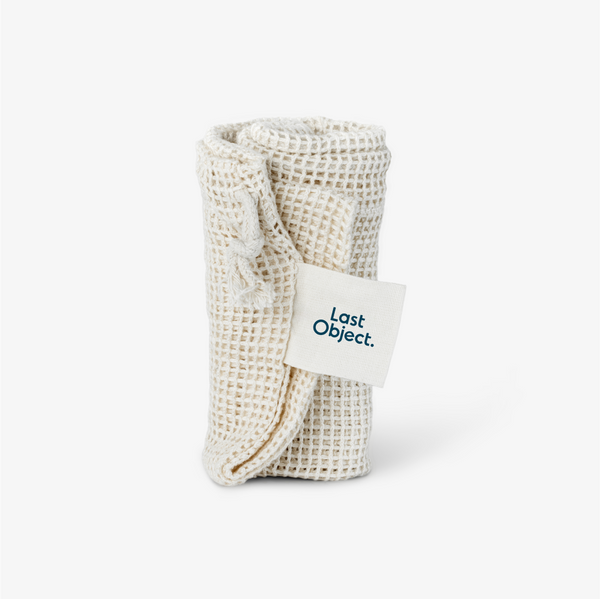Sustainability 101
What Is Recycling Contamination?
marraskuu 17, 2021
As the world population and human consumption continue to soar, there is a greater need for recycling. Reusing what we already have is one of the best ways to lead more sustainable lives for the betterment of the planet. But have you heard about recycling contamination and how much it hinders the recycling process? Find out all you need to know about recycling contamination, its consequences, and how to reduce it below.
Plastic bags are a particularly big issue. If you place recyclable materials in plastic bags and send them off for recycling, the plastic bags will contaminate all the recyclables. That’s because they’re not accepted in a regular recycling program and can also disrupt or break machinery further down the recycling stream. Even leaving leftover food scraps in a plastic container can actually contaminate an entire recycling batch.
In fact, 80% of items that end up in landfills could actually be recycled. Studies have shown that an estimated 75% of all waste can be recycled, but close to 30% actually gets recycled. It’s clear to see why this is a problem.
Here are some of the issues that recycling contamination causes.
Diminishing The Value Of Recyclable
As the world becomes more aware of the value of recycling, it’s becoming increasingly profitable. It’s in higher demand because people are buying products that are made from recycled materials. Contaminated recyclables, however, are less valuable.
Big recycling facilities use recycled items as revenue to keep up with overheads like wages, electricity, heat, and suppliers. If contamination grows, profits fall, and it can then have an effect on the recycling facility's whole operation.
Reducing The Rate Of Recycling
If recyclables are contaminated with non-recyclables, it slows down the recycling rate of the plant as a whole. If a plastic bag or polystyrene cup falls into recyclables, the entire batch is eventually sent to a landfill, which ultimately leads to more problems.
Breaking Recycling Machinery
Different types of items require different machines for recycling. Mixing recyclables like wine bottles with paper recyclables can damage machinery. It’ll then require a specialist to fix the problem, which can come at a considerable time and financial cost, not to mention significant injury risks.
Safety Hazards For Recycling Workers
It's not just broken machines that are dangerous at recycling facilities. There are other hazards that can cause serious injury or health problems for workers. For example, removing non-recyclable materials like electronic or biohazardous waste incorrectly can spell big trouble for staff.
Plastic Bags

Plastic bags pose a serious risk to recycling machinery. They can get tangled and caught up in the cranks and shafts of the equipment. This can lead to wasted time removing the bags or repairing the machine.
Loose Shredded Paper

Paper is a great recyclable item because the long fibers allow it to run through multiple recycling cycles. The issue comes with shredded paper. The small pieces make it very difficult to process and recycle properly, which can contaminate other recycled paper streams. As a result, this lowers the value of the newly recycled paper.
Food Waste

Food waste on cardboard surfaces or plastic containers is a common form of contamination that people sometimes overlook. It makes the respective material impossible to recycle. Recycling workers would have to spend time scraping off the leftover food, leading to wasted time and energy in addition to the contamination of other recyclable goods.
Wrong Plastics

Almost all plastics can be recycled but the ones you should add to your recycling depends on your local recycling facility. The most commonly recycled plastics are PET (Polyethylene terephthalate) and HDPE (High-density polyethylene), which are used for single-use beverage bottles or shampoo bottles. Certain examples of non-recyclable plastics (that you’ll need to check-up on with your local recycling authority) are bioplastics, composite plastic, plastic-coated wrapping paper, and polycarbonate, otherwise known as cling film and blister packaging.
Some Beverage Cartons

Check with your local recycling facility when recycling beverage cartons such as single-use coffee cups or fruit juice cartons. If a beverage carton can be recycled, ensure to pour the contents of it out entirely and quickly rinse it down.
Frozen Food Containers

Frozen food containers cannot be recycled due to the shiny outer coating of the cardboard box, which prevents freezer burn. Since this coating is attached to the cardboard it cannot be removed during recycling.
Hazardous Waste

Items that cause injury or harm to recycling workers or machinery must not be recycled. Medical equipment, items with human fluid, or toxic substances should be disposed of at landfills instead.
Scrap Metal

Scrap metal can be very dangerous. It can cause serious injury to recycling workers or significantly damage recycling equipment. As such, scrap metal shouldn’t be part of your normal recycling.
Caps Or Lids

The caps and lids of bottles and cups are generally made from different materials. These materials should be separated and recycled accordingly. It’s advisable to check with your local recycling facility if they accept these items as recyclables.
Flattened Containers

Flattened containers can mistakenly be sent to another part of the recycling facility. When this happens, it can contaminate a batch of other recyclables leading to low quality and a big reduction in the value of recycled items.
Batteries

Never add batteries to your recycling under any circumstances! They can be very dangerous and carry a risk of exploding if caught in recycling machinery.
Ceramics & Mirrors

Ceramics and mirrors are not recyclable and can’t be used for repurposing either. It’s best to contact your local household waste facility on how to dispose of such items correctly.
Governments and local authorities must implement the right measures and signage to improve the quality of items being added to recycling bins to begin with. This will have far-reaching benefits for the planet as a whole.
What Is Recycling Contamination?
Recycling contamination occurs when non-recyclable materials are mixed with recyclable materials. Any item that is not meant to be in a certain recycling bin can be considered a contaminant. If beverage cans or plastic containers are placed in a paper recycling bin, for example, it will contaminate that entire recycling bin.Plastic bags are a particularly big issue. If you place recyclable materials in plastic bags and send them off for recycling, the plastic bags will contaminate all the recyclables. That’s because they’re not accepted in a regular recycling program and can also disrupt or break machinery further down the recycling stream. Even leaving leftover food scraps in a plastic container can actually contaminate an entire recycling batch.
Why Is Recycling Contamination A Big Problem?
Even if you recycle, it's hard to make sure you're doing it right. For example, you might accidentally add non-recyclable plastic to your recycling. When this happens, the whole batch will get thrown out. So even though you're technically recycling, it doesn't mean that your items will actually be recycled.In fact, 80% of items that end up in landfills could actually be recycled. Studies have shown that an estimated 75% of all waste can be recycled, but close to 30% actually gets recycled. It’s clear to see why this is a problem.
Here are some of the issues that recycling contamination causes.
Diminishing The Value Of Recyclable
As the world becomes more aware of the value of recycling, it’s becoming increasingly profitable. It’s in higher demand because people are buying products that are made from recycled materials. Contaminated recyclables, however, are less valuable.
Big recycling facilities use recycled items as revenue to keep up with overheads like wages, electricity, heat, and suppliers. If contamination grows, profits fall, and it can then have an effect on the recycling facility's whole operation.
Reducing The Rate Of Recycling
If recyclables are contaminated with non-recyclables, it slows down the recycling rate of the plant as a whole. If a plastic bag or polystyrene cup falls into recyclables, the entire batch is eventually sent to a landfill, which ultimately leads to more problems.
Breaking Recycling Machinery
Different types of items require different machines for recycling. Mixing recyclables like wine bottles with paper recyclables can damage machinery. It’ll then require a specialist to fix the problem, which can come at a considerable time and financial cost, not to mention significant injury risks.
Safety Hazards For Recycling Workers
It's not just broken machines that are dangerous at recycling facilities. There are other hazards that can cause serious injury or health problems for workers. For example, removing non-recyclable materials like electronic or biohazardous waste incorrectly can spell big trouble for staff.
What Types Of Recycling Contamination Exist?
Certain items can’t be recycled and cause contamination if they are. Here’s a list of some common culprits.Plastic Bags

Plastic bags pose a serious risk to recycling machinery. They can get tangled and caught up in the cranks and shafts of the equipment. This can lead to wasted time removing the bags or repairing the machine.
Loose Shredded Paper

Paper is a great recyclable item because the long fibers allow it to run through multiple recycling cycles. The issue comes with shredded paper. The small pieces make it very difficult to process and recycle properly, which can contaminate other recycled paper streams. As a result, this lowers the value of the newly recycled paper.
Food Waste

Food waste on cardboard surfaces or plastic containers is a common form of contamination that people sometimes overlook. It makes the respective material impossible to recycle. Recycling workers would have to spend time scraping off the leftover food, leading to wasted time and energy in addition to the contamination of other recyclable goods.
Wrong Plastics

Almost all plastics can be recycled but the ones you should add to your recycling depends on your local recycling facility. The most commonly recycled plastics are PET (Polyethylene terephthalate) and HDPE (High-density polyethylene), which are used for single-use beverage bottles or shampoo bottles. Certain examples of non-recyclable plastics (that you’ll need to check-up on with your local recycling authority) are bioplastics, composite plastic, plastic-coated wrapping paper, and polycarbonate, otherwise known as cling film and blister packaging.
Some Beverage Cartons

Check with your local recycling facility when recycling beverage cartons such as single-use coffee cups or fruit juice cartons. If a beverage carton can be recycled, ensure to pour the contents of it out entirely and quickly rinse it down.
Frozen Food Containers

Frozen food containers cannot be recycled due to the shiny outer coating of the cardboard box, which prevents freezer burn. Since this coating is attached to the cardboard it cannot be removed during recycling.
Hazardous Waste

Items that cause injury or harm to recycling workers or machinery must not be recycled. Medical equipment, items with human fluid, or toxic substances should be disposed of at landfills instead.
Scrap Metal

Scrap metal can be very dangerous. It can cause serious injury to recycling workers or significantly damage recycling equipment. As such, scrap metal shouldn’t be part of your normal recycling.
Caps Or Lids

The caps and lids of bottles and cups are generally made from different materials. These materials should be separated and recycled accordingly. It’s advisable to check with your local recycling facility if they accept these items as recyclables.
Flattened Containers

Flattened containers can mistakenly be sent to another part of the recycling facility. When this happens, it can contaminate a batch of other recyclables leading to low quality and a big reduction in the value of recycled items.
Batteries

Never add batteries to your recycling under any circumstances! They can be very dangerous and carry a risk of exploding if caught in recycling machinery.
Ceramics & Mirrors

Ceramics and mirrors are not recyclable and can’t be used for repurposing either. It’s best to contact your local household waste facility on how to dispose of such items correctly.
What Can We Do To Reduce Recycling Contamination?
Recycling contamination begins with us. To reduce it, we must understand what can and can’t be recycled. It requires separating items into the relevant recycling streams to avoid contaminating entire batches, which will likely end up in landfills.Governments and local authorities must implement the right measures and signage to improve the quality of items being added to recycling bins to begin with. This will have far-reaching benefits for the planet as a whole.
Putting An End To Contaminated Recycling
Recycling is one of the most effective methods of cleaning up the planet. It means less waste, fewer landfills, and less pollution. It also means we’re reusing more of what we already have, which is a far more sustainable way to live.MORE Sustainability 101 ARTICLES View all ›
Ready to make
the switch?
- Powerful Cleaning
- Dissolves Easily
- Skin-Friendly
- Eco-Friendly
- No Mess















